What are ETFs and How Do They Work?
Exchange-traded funds (ETFs) are investment vehicles that allow investors to own a diversified collection of assets, such as stocks, bonds, or commodities, without purchasing them individually. Unlike mutual funds, which are traded at the end of the trading day, ETFs are traded on stock exchanges throughout the day, just like regular stocks. This unique characteristic means their prices fluctuate based on market demand and supply, providing investors with real-time trading opportunities and transparency.
One of the key advantages of ETFs is their efficiency. They offer investors an easy and cost-effective way to gain exposure to different market segments, industries, or geographies. With typically low expense ratios compared to mutual funds, ETFs are attractive for those seeking to minimize fees while maximizing returns. Additionally, buying and selling ETFs is straightforward, as they can be traded through most brokerage accounts, making them a flexible option for both beginner and experienced investors.
ETFs cater to a wide range of investment strategies. Some ETFs are designed to track popular indexes, like the S&P 500, providing instant diversification and aligning with the market’s performance. Others are actively managed, leveraging the expertise of professional portfolio managers to select a curated mix of assets aimed at outperforming the market. This versatility allows investors to tailor their portfolios to their specific financial goals, whether they're focusing on stability, growth, or a blend of both.
Benefits of investing in ETFs
Investing in ETFs offers unparalleled diversification, allowing investors to spread their capital across a broad range of assets with just one purchase. Whether tracking a market index, industry, or global economy, ETFs reduce the risk associated with individual stock or bond investments. This built-in diversification helps safeguard portfolios from market volatility, making ETFs an ideal choice for conservative investors seeking stability without sacrificing growth potential.
ETFs can also be an excellent source of significant returns, especially for investors who select high-performing funds tailored to their goals. By choosing ETFs that track thriving sectors or leverage skilled managers, investors may benefit from impressive market performance while enjoying the flexibility and ease of ETF trading. Active investors can also seize opportunities to optimize returns by adjusting their ETF holdings based on evolving market trends.
The versatility and cost-effectiveness of ETFs make them a standout investment option for both beginners and seasoned investors. With lower expense ratios compared to mutual funds and seamless buying and selling throughout the day, ETFs deliver remarkable value. They cater to diverse investment strategies, whether it’s growth-focused investing, income generation, or preserving capital. Combining diversification, potential returns, and ease of access, ETFs provide a wealth of benefits that can help investors achieve their financial goals efficiently.
How ETFs differ from mutual funds
ETFs differ significantly from traditional mutual funds, particularly in how they are bought and sold. Mutual funds can only be traded at the end of the trading day, and all investors settle their transactions at a single price determined by the fund's net asset value (NAV). Conversely, ETFs are traded on exchanges throughout the day, just like individual stocks, enabling investors to buy and sell shares at real-time market prices. This intraday trading feature gives ETFs an edge in flexibility and responsiveness to market movements.
While ETFs and mutual funds share similar structures, such as pooling investor money to create diversified portfolios, ETFs stand out for their versatility. ETFs often have lower expense ratios, making them a cost-effective option for many investors. Additionally, ETFs provide more liquidity due to their exchange-based trading and the ability to employ advanced strategies like short selling and margin trading. These factors make ETFs an appealing choice for investors seeking both diversification and dynamic market access.
Example of U.S. Market-Cap Index ETFs
U.S. Market-Cap Index ETFs provide investors with a convenient way to gain broad exposure to a diverse range of publicly traded companies listed on American exchanges. These funds typically encompass companies across various sectors and industries, ensuring that investors can participate in the overall growth of the U.S. economy. By investing in these ETFs, individuals can simplify their portfolio management and reduce the risk of over-concentrating in a single sector or stock.
These ETFs are designed to track the performance of major stock market indices, such as the S&P 500 or the Nasdaq 100. For instance, an ETF tracking the S&P 500 replicates the movements of the 500 largest U.S. companies by market capitalization. Similarly, ETFs linked to the Nasdaq 100 focus on the performance of 100 of the largest non-financial companies on the Nasdaq Stock Exchange, often providing greater exposure to the technology sector.
Prominent examples of U.S. Market-Cap Index ETFs include the Vanguard S&P 500 ETF (VOO) and the SPDR S&P 500 ETF Trust (SPY). Both of these funds are highly regarded for their cost-effectiveness and liquidity, making them appealing to investors. Additionally, ETFs like the Invesco QQQ Trust (QQQ) offer exposure to the Nasdaq 100 index, enabling investors to benefit from the robust performance of technology-driven companies. By choosing these ETFs, investors can effectively align their portfolios with market benchmarks and achieve long-term growth.
Examples of International ETFs
International ETFs offer investors a strategic way to access publicly traded companies located outside of the United States. These funds are designed to provide targeted exposure to foreign markets, spanning regions such as Europe, Asia, and emerging economies. By investing in international ETFs, individuals can diversify their portfolios geographically and tap into the growth potential of various global industries and economies.
However, investing in foreign companies through international ETFs comes with its own set of challenges. Currency risk is a key consideration, as fluctuations in exchange rates can impact returns. Governance risks, including varying regulatory standards and political instability in certain regions, also play a role in shaping investment outcomes. Investors must weigh these risks carefully and consider the long-term advantages of global diversification against potential drawbacks.
Notable examples of international ETFs include the iShares Core MSCI Total International Stock ETF (IXUS) and the Vanguard FTSE Developed Markets ETF (VEA). The IXUS ETF provides exposure to a comprehensive range of stocks from developed and emerging markets outside the U.S., while the VEA ETF focuses specifically on companies in developed markets such as Japan, Canada, and Western Europe. Both ETFs are favored by investors for their cost-efficiency and broad market representation, making them valuable tools for achieving international diversification.
Top Sector ETFs
Top Sector ETFs provide investors with a unique opportunity to concentrate their investments in specific industries. Whether it's technology, healthcare, energy, or semiconductors, these ETFs enable individuals to target sectors poised for growth or driven by particular economic trends. By focusing on an industry rather than individual stocks, sector ETFs allow investors to capture the overall performance of a targeted market segment.
Most sector ETFs are passive investment vehicles that track a preset index of stocks within the chosen industry. For example, a sector ETF tied to the semiconductor industry might aim to mirror the performance of an index composed of leading semiconductor companies. This passive approach ensures that the ETF closely aligns with the sector's movements, providing investors with transparency and simplicity in managing their portfolios.
Prominent examples of sector ETFs include the VanEck Semiconductor ETF (SMH) and the First Trust Dow Jones Internet Index Fund (FDN). The VanEck Semiconductor ETF focuses on semiconductor manufacturers like NVIDIA and Intel, making it ideal for investors interested in the technological backbone of computing and AI. Meanwhile, the First Trust Dow Jones Internet Index Fund provides exposure to internet-focused companies such as Amazon and Meta Platforms, offering a gateway to the expanding digital economy. These ETFs exemplify the strategic benefits of sector-focused investments for capturing industry-specific growth.
Examples of Dividend ETFs
Dividend ETFs are tailored for investors seeking a steady stream of income alongside portfolio growth. These funds focus exclusively on stocks from companies known for distributing dividends to shareholders, offering a reliable way to capture returns through both capital appreciation and regular payouts. By investing in Dividend ETFs, individuals can benefit from enhanced portfolio stability, especially during volatile market conditions.
Typically, Dividend ETFs are passively managed, meaning they aim to replicate the performance of a specific index composed of dividend-paying firms. This passive approach ensures a low-cost investment option while providing exposure to high-quality stocks. Investors appreciate these ETFs for their simplicity and focus on companies with consistent dividend histories, making them an attractive choice for income-driven strategies.
Prominent examples of Dividend ETFs include the iShares Core Dividend Growth ETF (DGRO) and the Vanguard Dividend Appreciation ETF (VIG). The iShares Core Dividend Growth ETF emphasizes companies with a history of dividend growth, ensuring exposure to firms with strong fundamentals. Meanwhile, the Vanguard Dividend Appreciation ETF tracks companies with a proven record of increasing dividends over time, highlighting stability and financial resilience. Both ETFs offer a cost-effective way to build an income-focused portfolio and align with long-term investment goals.
Examples of Top Volatility ETFs
Volatility ETFs offer investors the unique ability to capitalize on the ups and downs of the stock market. These specialized funds are designed to track market volatility, enabling traders to hedge against risk or speculate on sudden market movements. By betting on volatility, investors can potentially profit during periods of instability, which makes these ETFs particularly appealing to those with a higher risk tolerance or short-term trading strategies.
The foundation for volatility ETFs lies in the CBOE Volatility Index, commonly referred to as the VIX. The VIX measures the market's expectations for near-term volatility, often dubbed the "fear index" due to its sensitivity to investor sentiment. By closely following the VIX, volatility ETFs provide exposure to the fluctuations of the broader market, making them an effective tool for hedging against extreme uncertainty or taking advantage of sudden market swings.
Examples of top volatility ETFs include the iPath Series B S&P 500 VIX Short-Term Futures ETN (VXX) and the ProShares VIX Short-Term Futures ETF (VIXY). The iPath Series B ETN focuses on short-term VIX futures contracts, giving investors direct exposure to market turbulence. Similarly, the ProShares VIX Short-Term Futures ETF offers access to short-term VIX futures, allowing traders to navigate through sharp changes in market sentiment. Both ETFs are tailored for sophisticated investors aiming to leverage volatility as part of their broader portfolio strategies.
Example of Top Leveraged ETFs
Leveraged ETFs are specialized funds designed to amplify the returns of the index they are tracking, offering investors the opportunity to achieve gains at a much faster rate. These ETFs utilize financial derivatives and debt to generate higher exposure to the underlying index, making them popular among traders looking to capitalize on short-term market movements. However, due to their complex nature, leveraged ETFs are typically suited for experienced investors who are comfortable managing higher levels of risk.
A key feature of leveraged ETFs is their ability to target multiples of the daily return of their benchmark index. For instance, some leveraged ETFs aim for double (2x) or triple (3x) the daily performance of the index they track. This means that if the underlying index gains 1% in a day, a 2x leveraged ETF may increase by 2%, while a 3x ETF may rise by 3%. While this magnification can lead to significant profits during market upswings, it also comes with the potential for amplified losses when markets decline.
Notable examples of leveraged ETFs include the ProShares Ultra S&P 500 (SSO) and the Direxion Daily S&P 500 Bull 3X Shares (SPXL). The ProShares Ultra S&P 500 seeks to deliver twice the daily performance of the S&P 500 index, providing investors with amplified exposure to one of the most widely followed benchmarks. Meanwhile, the Direxion Daily S&P 500 Bull 3X Shares aims for triple the daily return of the S&P 500, making it an appealing option for traders aiming to maximize short-term gains during bullish market conditions. These funds illustrate the potential of leveraged ETFs to significantly enhance returns for investors with a high-risk tolerance.
Examples of Top Inverse ETFs
Inverse ETFs are specialized investment tools designed to increase in value as the market declines, making them ideal for investors looking to hedge against downturns or capitalize on bearish trends. These funds achieve their inverse performance by using financial derivatives, which allow them to profit when their underlying benchmark index loses value. Inverse ETFs are often used as short-term trading instruments by investors who anticipate near-term market declines.
These ETFs typically aim to deliver the exact opposite of the daily performance of a specific index, with some offering amplified returns of two or three times the inverse performance. For example, if the underlying index falls by 1% in a day, a 2x inverse ETF might rise by 2%, while a 3x inverse ETF could gain 3%. While this leverage can enhance returns during market downturns, it also increases risk, requiring careful consideration and active management from investors.
Prominent examples of Inverse ETFs include the ProShares Short S&P 500 (SH) and the Direxion Daily S&P 500 Bear 3X Shares (SPXS). The ProShares Short S&P 500 aims to deliver the exact inverse performance of the S&P 500 index on a daily basis, providing a straightforward hedge against broad market declines. Meanwhile, the Direxion Daily S&P 500 Bear 3X Shares seeks to amplify the inverse performance of the same index, making it an attractive option for more aggressive traders aiming to maximize their profits during bearish periods. These ETFs demonstrate the potential of inverse funds to strategically navigate volatile markets.
Examples of Top Bitcoin ETFs
Bitcoin ETFs provide a simplified way for investors to gain exposure to Bitcoin without directly owning the cryptocurrency. By purchasing shares in a Bitcoin ETF, investors can participate in the performance of Bitcoin through a regulated and familiar investment vehicle. This approach eliminates the need for managing private keys or navigating cryptocurrency exchanges, making it an accessible option for those new to digital assets.
These ETFs are designed to track the spot price of Bitcoin, ensuring that their performance closely mirrors the cryptocurrency's market value. By following the spot price, Bitcoin ETFs offer a transparent and straightforward way to invest in Bitcoin, aligning with its day-to-day price movements. This structure allows investors to benefit from Bitcoin's potential growth while avoiding the complexities of direct ownership.
Prominent examples of Bitcoin ETFs include the ProShares Bitcoin Strategy ETF (BITO) and the VanEck Bitcoin Trust. The ProShares Bitcoin Strategy ETF focuses on Bitcoin futures contracts, providing exposure to the cryptocurrency's price trends. Meanwhile, the VanEck Bitcoin Trust aims to directly track the spot price of Bitcoin, offering a pure-play option for investors seeking direct alignment with Bitcoin's market performance. These ETFs exemplify the growing integration of cryptocurrency into traditional investment portfolios.
Finding the Right ETF for Your Portfolio
Finding the right Exchange-Traded Fund (ETF) for your portfolio can significantly enhance your investment strategy and optimize returns. One of the most effective ways to streamline your search is by using your brokerage's screener tool. These tools allow you to filter ETFs based on key criteria such as asset type, geographic focus, and trading performance. For example, you can narrow your options to focus solely on ETFs specializing in tech stocks in North America or those emphasizing high-growth emerging markets. By customizing your search, you can identify ETFs that align with your financial goals and risk tolerance—saving both time and effort in building your portfolio.
To make a more informed decision, it's essential to weigh various factors that impact the overall efficiency and profitability of the ETFs you're considering. Administrative expenses, commissions, average trading volume, holdings, and historical performance are all vital metrics to evaluate. ETFs with consistently high trading volume tend to have better liquidity, allowing for easier buying and selling. Similarly, analyzing the holdings within an ETF will give you insights into its underlying assets, ensuring alignment with your investment strategy. Keep an eye on performance trends over time to identify funds with solid track records that reflect stability and growth potential.
Finally, cost-conscious investors should focus on ETFs with low expense ratios and no commissions. Expense ratios—essentially the fees charged for managing the fund—can eat into your profits over time, so opting for funds with minimal expenses is crucial. Many brokerages now offer commission-free ETFs, further reducing the cost of transactions and enabling you to invest more efficiently. These low-cost options provide a perfect balance between affordability and quality, empowering you to maximize returns while minimizing unnecessary expenses. By prioritizing these aspects, you'll be well on your way to building a diversified and cost-effective ETF portfolio tailored to your financial aspirations.
Managing Risk and Inflation with ETFs: Understanding the Impact of Inflation on Investments
Inflation, defined as the persistent rise in the general level of prices over time, can significantly erode the purchasing power of your money. This economic phenomenon often impacts everything from household goods to investment portfolios, making it a critical factor to consider in financial planning. As prices climb, the real value of fixed-income assets like savings accounts and traditional bonds decreases, potentially leaving investors with reduced purchasing power over the long term. Understanding the effects of inflation is crucial for safeguarding your financial future and ensuring your portfolio remains resilient.
To protect yourself from inflation, it's vital to seek investments that outpace its growth rate. Assets such as stocks, real estate, and commodities often perform better in inflationary environments because their value tends to increase alongside rising prices. By focusing on investment vehicles that are designed to adapt to inflationary pressures, you can maintain the real value of your returns. Diversification becomes especially important during inflationary periods, allowing you to spread risk across asset classes that have the potential to perform well under such conditions.
ETFs (Exchange-Traded Funds) provide a practical and accessible way to hedge against inflation while diversifying your portfolio. Specific ETFs, like those focusing on commodities, real estate, or Treasury Inflation-Protected Securities (TIPS), are tailored to combat the adverse effects of inflation. These funds offer exposure to assets that historically demonstrate resilience during inflationary periods, enabling investors to stay ahead of rising prices. Additionally, ETFs are known for their low costs and flexibility, making them an ideal choice for investors seeking to manage risk and inflation effectively. By integrating inflation-focused ETFs into your strategy, you can build a robust portfolio ready to weather economic uncertainties.
Examples of Using ETFs to Hedge Against Inflation
Exchange-Traded Funds (ETFs) offer investors a convenient way to hedge against inflation by providing exposure to assets that historically perform well during inflationary periods. Inflation often causes certain asset classes, such as commodities and real estate, to increase in value due to rising prices and higher demand. ETFs simplify the process of investing in these inflation-resistant assets, allowing investors to diversify their portfolios while mitigating the adverse effects of inflation. With inflation being an inevitable part of economic cycles, incorporating inflation-focused ETFs into your strategy can help safeguard your purchasing power and maintain portfolio stability.
Several types of ETFs are particularly well-suited for inflation hedging. Commodity ETFs, for instance, invest in assets like gold, oil, and agricultural products, which typically appreciate during inflationary spikes. Real estate ETFs focus on Real Estate Investment Trusts (REITs), offering exposure to properties and income streams that often rise in value alongside inflation. Another popular option is Treasury Inflation-Protected Securities (TIPS) ETFs, which are tied to the Consumer Price Index (CPI). These securities adjust for inflation automatically, ensuring that their value remains aligned with rising prices. By exploring these ETF categories, investors can tailor their portfolios to counter inflation effectively.
When selecting ETFs to hedge against inflation, it’s crucial to align your choices with your investment goals and risk tolerance. For example, commodity ETFs can be volatile, making them more suitable for investors with a higher risk appetite, while TIPS ETFs offer a more conservative approach. Additionally, consider factors such as expense ratios, trading performance, and diversification when evaluating ETFs. A well-balanced portfolio that incorporates a mix of inflation-resistant ETFs can help you weather inflationary pressures while maintaining long-term financial growth. By carefully assessing your needs and objectives, you can create a tailored investment strategy that effectively addresses inflation risks.
Frequently Asked Questions About ETFs
Are ETFs Suitable for Beginners?
Exchange-Traded Funds (ETFs) are a fantastic option for beginners venturing into the world of investing. These funds take the complexity out of choosing individual stocks by bundling multiple securities into a single, diversified investment. This means beginners don't need to worry about researching and analyzing individual companies, as ETFs spread risk across various assets, reducing potential volatility. Additionally, ETFs are traded on stock exchanges just like individual stocks, making them accessible and straightforward for new investors to buy and sell.
For beginners, the best ETFs to consider are those that focus on the broader market. Broad-market ETFs typically track major indexes, offering exposure to a wide range of companies across different sectors. This diversification provides a solid foundation for a beginner’s portfolio, as it minimizes risk and captures the overall performance of the market. By starting with a broader market-focused ETF, new investors can enjoy a hands-off approach while still participating in the market's potential growth. These ETFs serve as a stable entry point for individuals who are just beginning to build their financial portfolios.
Top options for beginner-friendly ETFs include the Vanguard 500 ETF (VOO), which tracks the S&P 500 Index, and the Vanguard Total Stock Market ETF (VTI). The Vanguard 500 ETF provides exposure to 500 of the largest U.S. companies, giving investors a snapshot of the overall U.S. stock market performance. On the other hand, the Vanguard Total Stock Market ETF goes even broader, including small-, mid-, and large-cap stocks across various sectors. Both ETFs come with low expense ratios, making them cost-effective for beginners aiming to grow their portfolios without incurring high fees. By choosing ETFs like these, new investors can take their first step into investing with confidence and simplicity.
What ETF Pays the Highest Dividend?
As of early 2025, data from ETFdb.com reveals that dozens of ETFs offer dividend yields in the double digits, making them attractive options for income-focused investors. These high-yield ETFs are designed to generate consistent cash flow, often appealing to retirees or those seeking passive income. However, while the allure of double-digit yields is strong, investors must carefully evaluate the sustainability and risks associated with these funds. High-dividend ETFs can provide significant income opportunities, but understanding their underlying strategies and market dynamics is crucial for making informed investment decisions.
Many of the ETFs with the highest dividend yields are small leveraged ETFs, which come with heightened risk levels. Leveraged ETFs amplify returns by using financial derivatives and debt, but this strategy also increases volatility and potential losses. These funds are often more suitable for experienced investors who can tolerate higher risk and actively manage their portfolios. For beginners or conservative investors, the risks associated with leveraged ETFs may outweigh the benefits of their high yields. It's essential to weigh the trade-offs and consider whether these funds align with your financial goals and risk tolerance.
Among the high-dividend ETFs that stand out for yield-seeking investors are the Global X NASDAQ 100 Covered Call ETF (QYLD) and the JPMorgan Nasdaq Equity Premium Income ETF (JEPQ). The QYLD employs a covered call strategy, generating income through options premiums, and boasts a yield of over 13%. Similarly, the JEPQ combines equity-linked notes and large-cap growth stocks to deliver a yield exceeding 11%. Both ETFs offer compelling income potential while maintaining a focus on quality holdings, making them noteworthy options for investors aiming to balance high yields with manageable risk. By incorporating these ETFs into a diversified portfolio, investors can effectively enhance their income streams while navigating market uncertainties.
Getting Started with ETF Investing
Exchange-Traded Funds (ETFs) are an excellent starting point for investors looking to build a diversified portfolio with simplicity and affordability. To begin, it's essential to familiarize yourself with how ETFs work. ETFs are collections of assets—like stocks, bonds, or commodities—bundled into a single investment that can be traded on stock exchanges just like individual stocks. Their low cost and built-in diversification make them ideal for beginners, offering exposure to various sectors or markets without requiring extensive research on individual securities. Getting started with ETFs involves choosing funds that align with your financial goals and risk tolerance, ensuring that your investments work effectively toward your long-term objectives.
When selecting your first ETF, consider starting with broad-market funds that track major indexes, such as the S&P 500 or the total stock market. These ETFs, like the Vanguard 500 ETF (VOO) or the Vanguard Total Stock Market ETF (VTI), offer exposure to hundreds—or even thousands—of companies across different industries. This diversification reduces risk, as the performance of the ETF is not dependent on the success of a single company or sector. Additionally, broad-market ETFs generally have lower expense ratios and are less volatile, making them accessible and cost-effective options for beginner investors looking to dip their toes into the market with confidence.
Once you've identified the ETFs that suit your goals, open an investment account with a reputable brokerage to begin trading. Many brokerages provide ETF screener tools that allow you to filter funds based on criteria like asset type, sector focus, and expense ratio. Take advantage of these resources to refine your choices and ensure you're selecting quality investments. Most brokerages also offer commission-free ETFs, helping to keep costs low as you start your investment journey. By leveraging ETFs' flexibility and affordability, beginners can gain meaningful market exposure while building a diversified portfolio tailored to their needs. With patience and a thoughtful approach, ETF investing can become a cornerstone of your financial strategy.
Conclusion
Exchange-Traded Funds (ETFs) offer a powerful and versatile investment solution for individuals seeking diversification, cost-efficiency, and adaptability. Whether you're a beginner looking to dip your toes into the market or a seasoned investor aiming to enhance portfolio performance, ETFs provide ample opportunities to achieve your financial goals. From tracking major indices to exploring international markets, the accessibility and flexibility of ETFs make them an essential component of modern investment strategies.
With their lower expense ratios and seamless trading throughout the day, ETFs stand out as a cost-effective alternative to traditional mutual funds. Their ability to cater to various investment preferences, such as growth-focused strategies, income generation, or hedging against inflation, ensures that every investor can find ETFs suited to their objectives. By leveraging the diverse range of options available, individuals can optimize portfolio stability while tapping into the potential for long-term returns.
As the investment landscape continues to evolve, ETFs remain a cornerstone for achieving financial success. Their dynamic features, combined with robust market representation, empower investors to navigate economic uncertainties and capitalize on growth opportunities. Whether you're focusing on U.S. market-cap index ETFs or seeking global diversification, ETFs offer a simplified and effective approach to building a resilient portfolio tailored to your needs.








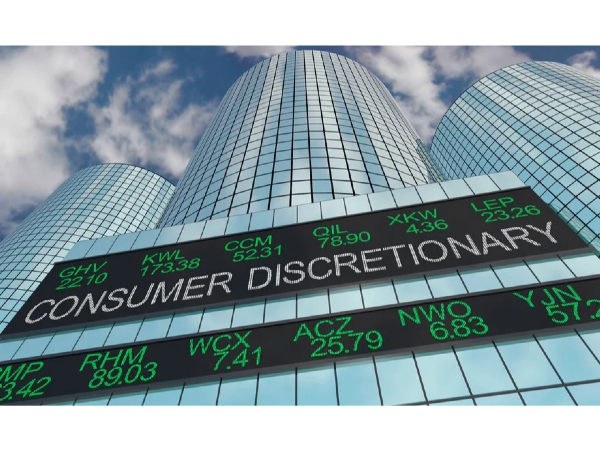





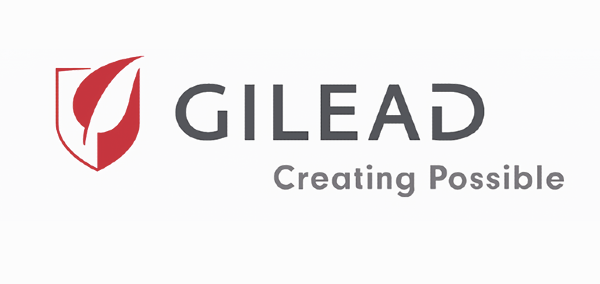

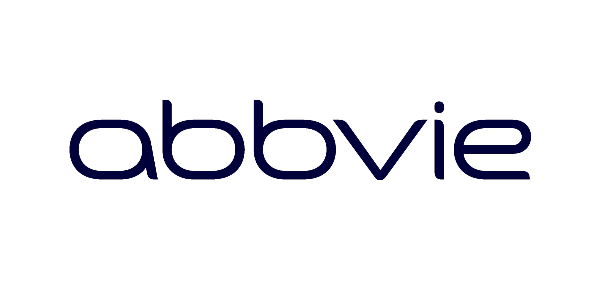

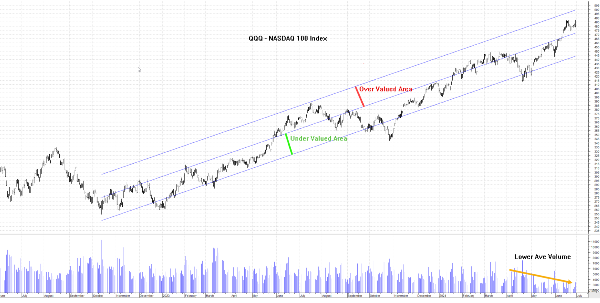
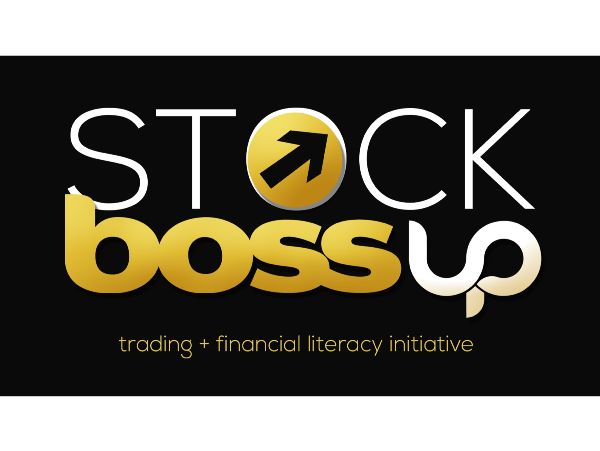
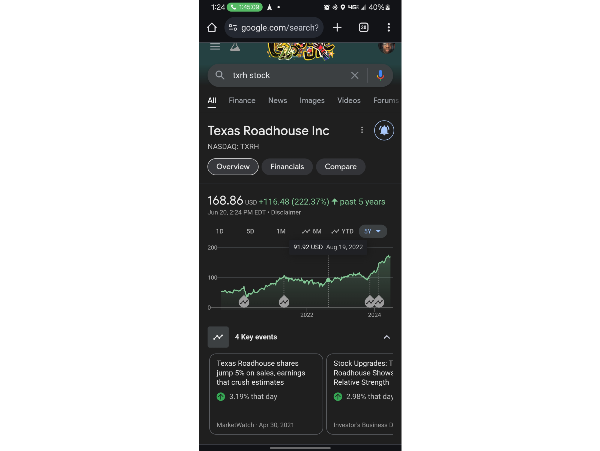








What are ETFs and How Do They Work?
Exchange-traded funds (ETFs) are investment vehicles that allow investors to own a diversified collection of assets, such as stocks, bonds, or commodities, without purchasing them individually. Unlike mutual funds, which are traded at the end of the trading day, ETFs are traded on stock exchanges throughout the day, just like regular stocks. This unique characteristic means their prices fluctuate based on market demand and supply, providing investors with real-time trading opportunities and transparency.
One of the key advantages of ETFs is their efficiency. They offer investors an easy and cost-effective way to gain exposure to different market segments, industries, or geographies. With typically low expense ratios compared to mutual funds, ETFs are attractive for those seeking to minimize fees while maximizing returns. Additionally, buying and selling ETFs is straightforward, as they can be traded through most brokerage accounts, making them a flexible option for both beginner and experienced investors.
ETFs cater to a wide range of investment strategies. Some ETFs are designed to track popular indexes, like the S&P 500, providing instant diversification and aligning with the market’s performance. Others are actively managed, leveraging the expertise of professional portfolio managers to select a curated mix of assets aimed at outperforming the market. This versatility allows investors to tailor their portfolios to their specific financial goals, whether they're focusing on stability, growth, or a blend of both.
Benefits of investing in ETFs
Investing in ETFs offers unparalleled diversification, allowing investors to spread their capital across a broad range of assets with just one purchase. Whether tracking a market index, industry, or global economy, ETFs reduce the risk associated with individual stock or bond investments. This built-in diversification helps safeguard portfolios from market volatility, making ETFs an ideal choice for conservative investors seeking stability without sacrificing growth potential.
ETFs can also be an excellent source of significant returns, especially for investors who select high-performing funds tailored to their goals. By choosing ETFs that track thriving sectors or leverage skilled managers, investors may benefit from impressive market performance while enjoying the flexibility and ease of ETF trading. Active investors can also seize opportunities to optimize returns by adjusting their ETF holdings based on evolving market trends.
The versatility and cost-effectiveness of ETFs make them a standout investment option for both beginners and seasoned investors. With lower expense ratios compared to mutual funds and seamless buying and selling throughout the day, ETFs deliver remarkable value. They cater to diverse investment strategies, whether it’s growth-focused investing, income generation, or preserving capital. Combining diversification, potential returns, and ease of access, ETFs provide a wealth of benefits that can help investors achieve their financial goals efficiently.
How ETFs differ from mutual funds
ETFs differ significantly from traditional mutual funds, particularly in how they are bought and sold. Mutual funds can only be traded at the end of the trading day, and all investors settle their transactions at a single price determined by the fund's net asset value (NAV). Conversely, ETFs are traded on exchanges throughout the day, just like individual stocks, enabling investors to buy and sell shares at real-time market prices. This intraday trading feature gives ETFs an edge in flexibility and responsiveness to market movements.
While ETFs and mutual funds share similar structures, such as pooling investor money to create diversified portfolios, ETFs stand out for their versatility. ETFs often have lower expense ratios, making them a cost-effective option for many investors. Additionally, ETFs provide more liquidity due to their exchange-based trading and the ability to employ advanced strategies like short selling and margin trading. These factors make ETFs an appealing choice for investors seeking both diversification and dynamic market access.
Example of U.S. Market-Cap Index ETFs
U.S. Market-Cap Index ETFs provide investors with a convenient way to gain broad exposure to a diverse range of publicly traded companies listed on American exchanges. These funds typically encompass companies across various sectors and industries, ensuring that investors can participate in the overall growth of the U.S. economy. By investing in these ETFs, individuals can simplify their portfolio management and reduce the risk of over-concentrating in a single sector or stock.
These ETFs are designed to track the performance of major stock market indices, such as the S&P 500 or the Nasdaq 100. For instance, an ETF tracking the S&P 500 replicates the movements of the 500 largest U.S. companies by market capitalization. Similarly, ETFs linked to the Nasdaq 100 focus on the performance of 100 of the largest non-financial companies on the Nasdaq Stock Exchange, often providing greater exposure to the technology sector.
Prominent examples of U.S. Market-Cap Index ETFs include the Vanguard S&P 500 ETF (VOO) and the SPDR S&P 500 ETF Trust (SPY). Both of these funds are highly regarded for their cost-effectiveness and liquidity, making them appealing to investors. Additionally, ETFs like the Invesco QQQ Trust (QQQ) offer exposure to the Nasdaq 100 index, enabling investors to benefit from the robust performance of technology-driven companies. By choosing these ETFs, investors can effectively align their portfolios with market benchmarks and achieve long-term growth.
Examples of International ETFs
International ETFs offer investors a strategic way to access publicly traded companies located outside of the United States. These funds are designed to provide targeted exposure to foreign markets, spanning regions such as Europe, Asia, and emerging economies. By investing in international ETFs, individuals can diversify their portfolios geographically and tap into the growth potential of various global industries and economies.
However, investing in foreign companies through international ETFs comes with its own set of challenges. Currency risk is a key consideration, as fluctuations in exchange rates can impact returns. Governance risks, including varying regulatory standards and political instability in certain regions, also play a role in shaping investment outcomes. Investors must weigh these risks carefully and consider the long-term advantages of global diversification against potential drawbacks.
Notable examples of international ETFs include the iShares Core MSCI Total International Stock ETF (IXUS) and the Vanguard FTSE Developed Markets ETF (VEA). The IXUS ETF provides exposure to a comprehensive range of stocks from developed and emerging markets outside the U.S., while the VEA ETF focuses specifically on companies in developed markets such as Japan, Canada, and Western Europe. Both ETFs are favored by investors for their cost-efficiency and broad market representation, making them valuable tools for achieving international diversification.
Top Sector ETFs
Top Sector ETFs provide investors with a unique opportunity to concentrate their investments in specific industries. Whether it's technology, healthcare, energy, or semiconductors, these ETFs enable individuals to target sectors poised for growth or driven by particular economic trends. By focusing on an industry rather than individual stocks, sector ETFs allow investors to capture the overall performance of a targeted market segment.
Most sector ETFs are passive investment vehicles that track a preset index of stocks within the chosen industry. For example, a sector ETF tied to the semiconductor industry might aim to mirror the performance of an index composed of leading semiconductor companies. This passive approach ensures that the ETF closely aligns with the sector's movements, providing investors with transparency and simplicity in managing their portfolios.
Prominent examples of sector ETFs include the VanEck Semiconductor ETF (SMH) and the First Trust Dow Jones Internet Index Fund (FDN). The VanEck Semiconductor ETF focuses on semiconductor manufacturers like NVIDIA and Intel, making it ideal for investors interested in the technological backbone of computing and AI. Meanwhile, the First Trust Dow Jones Internet Index Fund provides exposure to internet-focused companies such as Amazon and Meta Platforms, offering a gateway to the expanding digital economy. These ETFs exemplify the strategic benefits of sector-focused investments for capturing industry-specific growth.
Examples of Dividend ETFs
Dividend ETFs are tailored for investors seeking a steady stream of income alongside portfolio growth. These funds focus exclusively on stocks from companies known for distributing dividends to shareholders, offering a reliable way to capture returns through both capital appreciation and regular payouts. By investing in Dividend ETFs, individuals can benefit from enhanced portfolio stability, especially during volatile market conditions.
Typically, Dividend ETFs are passively managed, meaning they aim to replicate the performance of a specific index composed of dividend-paying firms. This passive approach ensures a low-cost investment option while providing exposure to high-quality stocks. Investors appreciate these ETFs for their simplicity and focus on companies with consistent dividend histories, making them an attractive choice for income-driven strategies.
Prominent examples of Dividend ETFs include the iShares Core Dividend Growth ETF (DGRO) and the Vanguard Dividend Appreciation ETF (VIG). The iShares Core Dividend Growth ETF emphasizes companies with a history of dividend growth, ensuring exposure to firms with strong fundamentals. Meanwhile, the Vanguard Dividend Appreciation ETF tracks companies with a proven record of increasing dividends over time, highlighting stability and financial resilience. Both ETFs offer a cost-effective way to build an income-focused portfolio and align with long-term investment goals.
Examples of Top Volatility ETFs
Volatility ETFs offer investors the unique ability to capitalize on the ups and downs of the stock market. These specialized funds are designed to track market volatility, enabling traders to hedge against risk or speculate on sudden market movements. By betting on volatility, investors can potentially profit during periods of instability, which makes these ETFs particularly appealing to those with a higher risk tolerance or short-term trading strategies.
The foundation for volatility ETFs lies in the CBOE Volatility Index, commonly referred to as the VIX. The VIX measures the market's expectations for near-term volatility, often dubbed the "fear index" due to its sensitivity to investor sentiment. By closely following the VIX, volatility ETFs provide exposure to the fluctuations of the broader market, making them an effective tool for hedging against extreme uncertainty or taking advantage of sudden market swings.
Examples of top volatility ETFs include the iPath Series B S&P 500 VIX Short-Term Futures ETN (VXX) and the ProShares VIX Short-Term Futures ETF (VIXY). The iPath Series B ETN focuses on short-term VIX futures contracts, giving investors direct exposure to market turbulence. Similarly, the ProShares VIX Short-Term Futures ETF offers access to short-term VIX futures, allowing traders to navigate through sharp changes in market sentiment. Both ETFs are tailored for sophisticated investors aiming to leverage volatility as part of their broader portfolio strategies.
Example of Top Leveraged ETFs
Leveraged ETFs are specialized funds designed to amplify the returns of the index they are tracking, offering investors the opportunity to achieve gains at a much faster rate. These ETFs utilize financial derivatives and debt to generate higher exposure to the underlying index, making them popular among traders looking to capitalize on short-term market movements. However, due to their complex nature, leveraged ETFs are typically suited for experienced investors who are comfortable managing higher levels of risk.
A key feature of leveraged ETFs is their ability to target multiples of the daily return of their benchmark index. For instance, some leveraged ETFs aim for double (2x) or triple (3x) the daily performance of the index they track. This means that if the underlying index gains 1% in a day, a 2x leveraged ETF may increase by 2%, while a 3x ETF may rise by 3%. While this magnification can lead to significant profits during market upswings, it also comes with the potential for amplified losses when markets decline.
Notable examples of leveraged ETFs include the ProShares Ultra S&P 500 (SSO) and the Direxion Daily S&P 500 Bull 3X Shares (SPXL). The ProShares Ultra S&P 500 seeks to deliver twice the daily performance of the S&P 500 index, providing investors with amplified exposure to one of the most widely followed benchmarks. Meanwhile, the Direxion Daily S&P 500 Bull 3X Shares aims for triple the daily return of the S&P 500, making it an appealing option for traders aiming to maximize short-term gains during bullish market conditions. These funds illustrate the potential of leveraged ETFs to significantly enhance returns for investors with a high-risk tolerance.
Examples of Top Inverse ETFs
Inverse ETFs are specialized investment tools designed to increase in value as the market declines, making them ideal for investors looking to hedge against downturns or capitalize on bearish trends. These funds achieve their inverse performance by using financial derivatives, which allow them to profit when their underlying benchmark index loses value. Inverse ETFs are often used as short-term trading instruments by investors who anticipate near-term market declines.
These ETFs typically aim to deliver the exact opposite of the daily performance of a specific index, with some offering amplified returns of two or three times the inverse performance. For example, if the underlying index falls by 1% in a day, a 2x inverse ETF might rise by 2%, while a 3x inverse ETF could gain 3%. While this leverage can enhance returns during market downturns, it also increases risk, requiring careful consideration and active management from investors.
Prominent examples of Inverse ETFs include the ProShares Short S&P 500 (SH) and the Direxion Daily S&P 500 Bear 3X Shares (SPXS). The ProShares Short S&P 500 aims to deliver the exact inverse performance of the S&P 500 index on a daily basis, providing a straightforward hedge against broad market declines. Meanwhile, the Direxion Daily S&P 500 Bear 3X Shares seeks to amplify the inverse performance of the same index, making it an attractive option for more aggressive traders aiming to maximize their profits during bearish periods. These ETFs demonstrate the potential of inverse funds to strategically navigate volatile markets.
Examples of Top Bitcoin ETFs
Bitcoin ETFs provide a simplified way for investors to gain exposure to Bitcoin without directly owning the cryptocurrency. By purchasing shares in a Bitcoin ETF, investors can participate in the performance of Bitcoin through a regulated and familiar investment vehicle. This approach eliminates the need for managing private keys or navigating cryptocurrency exchanges, making it an accessible option for those new to digital assets.
These ETFs are designed to track the spot price of Bitcoin, ensuring that their performance closely mirrors the cryptocurrency's market value. By following the spot price, Bitcoin ETFs offer a transparent and straightforward way to invest in Bitcoin, aligning with its day-to-day price movements. This structure allows investors to benefit from Bitcoin's potential growth while avoiding the complexities of direct ownership.
Prominent examples of Bitcoin ETFs include the ProShares Bitcoin Strategy ETF (BITO) and the VanEck Bitcoin Trust. The ProShares Bitcoin Strategy ETF focuses on Bitcoin futures contracts, providing exposure to the cryptocurrency's price trends. Meanwhile, the VanEck Bitcoin Trust aims to directly track the spot price of Bitcoin, offering a pure-play option for investors seeking direct alignment with Bitcoin's market performance. These ETFs exemplify the growing integration of cryptocurrency into traditional investment portfolios.
Finding the Right ETF for Your Portfolio
Finding the right Exchange-Traded Fund (ETF) for your portfolio can significantly enhance your investment strategy and optimize returns. One of the most effective ways to streamline your search is by using your brokerage's screener tool. These tools allow you to filter ETFs based on key criteria such as asset type, geographic focus, and trading performance. For example, you can narrow your options to focus solely on ETFs specializing in tech stocks in North America or those emphasizing high-growth emerging markets. By customizing your search, you can identify ETFs that align with your financial goals and risk tolerance—saving both time and effort in building your portfolio.
To make a more informed decision, it's essential to weigh various factors that impact the overall efficiency and profitability of the ETFs you're considering. Administrative expenses, commissions, average trading volume, holdings, and historical performance are all vital metrics to evaluate. ETFs with consistently high trading volume tend to have better liquidity, allowing for easier buying and selling. Similarly, analyzing the holdings within an ETF will give you insights into its underlying assets, ensuring alignment with your investment strategy. Keep an eye on performance trends over time to identify funds with solid track records that reflect stability and growth potential.
Finally, cost-conscious investors should focus on ETFs with low expense ratios and no commissions. Expense ratios—essentially the fees charged for managing the fund—can eat into your profits over time, so opting for funds with minimal expenses is crucial. Many brokerages now offer commission-free ETFs, further reducing the cost of transactions and enabling you to invest more efficiently. These low-cost options provide a perfect balance between affordability and quality, empowering you to maximize returns while minimizing unnecessary expenses. By prioritizing these aspects, you'll be well on your way to building a diversified and cost-effective ETF portfolio tailored to your financial aspirations.
Managing Risk and Inflation with ETFs: Understanding the Impact of Inflation on Investments
Inflation, defined as the persistent rise in the general level of prices over time, can significantly erode the purchasing power of your money. This economic phenomenon often impacts everything from household goods to investment portfolios, making it a critical factor to consider in financial planning. As prices climb, the real value of fixed-income assets like savings accounts and traditional bonds decreases, potentially leaving investors with reduced purchasing power over the long term. Understanding the effects of inflation is crucial for safeguarding your financial future and ensuring your portfolio remains resilient.
To protect yourself from inflation, it's vital to seek investments that outpace its growth rate. Assets such as stocks, real estate, and commodities often perform better in inflationary environments because their value tends to increase alongside rising prices. By focusing on investment vehicles that are designed to adapt to inflationary pressures, you can maintain the real value of your returns. Diversification becomes especially important during inflationary periods, allowing you to spread risk across asset classes that have the potential to perform well under such conditions.
ETFs (Exchange-Traded Funds) provide a practical and accessible way to hedge against inflation while diversifying your portfolio. Specific ETFs, like those focusing on commodities, real estate, or Treasury Inflation-Protected Securities (TIPS), are tailored to combat the adverse effects of inflation. These funds offer exposure to assets that historically demonstrate resilience during inflationary periods, enabling investors to stay ahead of rising prices. Additionally, ETFs are known for their low costs and flexibility, making them an ideal choice for investors seeking to manage risk and inflation effectively. By integrating inflation-focused ETFs into your strategy, you can build a robust portfolio ready to weather economic uncertainties.
Examples of Using ETFs to Hedge Against Inflation
Exchange-Traded Funds (ETFs) offer investors a convenient way to hedge against inflation by providing exposure to assets that historically perform well during inflationary periods. Inflation often causes certain asset classes, such as commodities and real estate, to increase in value due to rising prices and higher demand. ETFs simplify the process of investing in these inflation-resistant assets, allowing investors to diversify their portfolios while mitigating the adverse effects of inflation. With inflation being an inevitable part of economic cycles, incorporating inflation-focused ETFs into your strategy can help safeguard your purchasing power and maintain portfolio stability.
Several types of ETFs are particularly well-suited for inflation hedging. Commodity ETFs, for instance, invest in assets like gold, oil, and agricultural products, which typically appreciate during inflationary spikes. Real estate ETFs focus on Real Estate Investment Trusts (REITs), offering exposure to properties and income streams that often rise in value alongside inflation. Another popular option is Treasury Inflation-Protected Securities (TIPS) ETFs, which are tied to the Consumer Price Index (CPI). These securities adjust for inflation automatically, ensuring that their value remains aligned with rising prices. By exploring these ETF categories, investors can tailor their portfolios to counter inflation effectively.
When selecting ETFs to hedge against inflation, it’s crucial to align your choices with your investment goals and risk tolerance. For example, commodity ETFs can be volatile, making them more suitable for investors with a higher risk appetite, while TIPS ETFs offer a more conservative approach. Additionally, consider factors such as expense ratios, trading performance, and diversification when evaluating ETFs. A well-balanced portfolio that incorporates a mix of inflation-resistant ETFs can help you weather inflationary pressures while maintaining long-term financial growth. By carefully assessing your needs and objectives, you can create a tailored investment strategy that effectively addresses inflation risks.
Frequently Asked Questions About ETFs
Are ETFs Suitable for Beginners?
Exchange-Traded Funds (ETFs) are a fantastic option for beginners venturing into the world of investing. These funds take the complexity out of choosing individual stocks by bundling multiple securities into a single, diversified investment. This means beginners don't need to worry about researching and analyzing individual companies, as ETFs spread risk across various assets, reducing potential volatility. Additionally, ETFs are traded on stock exchanges just like individual stocks, making them accessible and straightforward for new investors to buy and sell.
For beginners, the best ETFs to consider are those that focus on the broader market. Broad-market ETFs typically track major indexes, offering exposure to a wide range of companies across different sectors. This diversification provides a solid foundation for a beginner’s portfolio, as it minimizes risk and captures the overall performance of the market. By starting with a broader market-focused ETF, new investors can enjoy a hands-off approach while still participating in the market's potential growth. These ETFs serve as a stable entry point for individuals who are just beginning to build their financial portfolios.
Top options for beginner-friendly ETFs include the Vanguard 500 ETF (VOO), which tracks the S&P 500 Index, and the Vanguard Total Stock Market ETF (VTI). The Vanguard 500 ETF provides exposure to 500 of the largest U.S. companies, giving investors a snapshot of the overall U.S. stock market performance. On the other hand, the Vanguard Total Stock Market ETF goes even broader, including small-, mid-, and large-cap stocks across various sectors. Both ETFs come with low expense ratios, making them cost-effective for beginners aiming to grow their portfolios without incurring high fees. By choosing ETFs like these, new investors can take their first step into investing with confidence and simplicity.
What ETF Pays the Highest Dividend?
As of early 2025, data from ETFdb.com reveals that dozens of ETFs offer dividend yields in the double digits, making them attractive options for income-focused investors. These high-yield ETFs are designed to generate consistent cash flow, often appealing to retirees or those seeking passive income. However, while the allure of double-digit yields is strong, investors must carefully evaluate the sustainability and risks associated with these funds. High-dividend ETFs can provide significant income opportunities, but understanding their underlying strategies and market dynamics is crucial for making informed investment decisions.
Many of the ETFs with the highest dividend yields are small leveraged ETFs, which come with heightened risk levels. Leveraged ETFs amplify returns by using financial derivatives and debt, but this strategy also increases volatility and potential losses. These funds are often more suitable for experienced investors who can tolerate higher risk and actively manage their portfolios. For beginners or conservative investors, the risks associated with leveraged ETFs may outweigh the benefits of their high yields. It's essential to weigh the trade-offs and consider whether these funds align with your financial goals and risk tolerance.
Among the high-dividend ETFs that stand out for yield-seeking investors are the Global X NASDAQ 100 Covered Call ETF (QYLD) and the JPMorgan Nasdaq Equity Premium Income ETF (JEPQ). The QYLD employs a covered call strategy, generating income through options premiums, and boasts a yield of over 13%. Similarly, the JEPQ combines equity-linked notes and large-cap growth stocks to deliver a yield exceeding 11%. Both ETFs offer compelling income potential while maintaining a focus on quality holdings, making them noteworthy options for investors aiming to balance high yields with manageable risk. By incorporating these ETFs into a diversified portfolio, investors can effectively enhance their income streams while navigating market uncertainties.
Getting Started with ETF Investing
Exchange-Traded Funds (ETFs) are an excellent starting point for investors looking to build a diversified portfolio with simplicity and affordability. To begin, it's essential to familiarize yourself with how ETFs work. ETFs are collections of assets—like stocks, bonds, or commodities—bundled into a single investment that can be traded on stock exchanges just like individual stocks. Their low cost and built-in diversification make them ideal for beginners, offering exposure to various sectors or markets without requiring extensive research on individual securities. Getting started with ETFs involves choosing funds that align with your financial goals and risk tolerance, ensuring that your investments work effectively toward your long-term objectives.
When selecting your first ETF, consider starting with broad-market funds that track major indexes, such as the S&P 500 or the total stock market. These ETFs, like the Vanguard 500 ETF (VOO) or the Vanguard Total Stock Market ETF (VTI), offer exposure to hundreds—or even thousands—of companies across different industries. This diversification reduces risk, as the performance of the ETF is not dependent on the success of a single company or sector. Additionally, broad-market ETFs generally have lower expense ratios and are less volatile, making them accessible and cost-effective options for beginner investors looking to dip their toes into the market with confidence.
Once you've identified the ETFs that suit your goals, open an investment account with a reputable brokerage to begin trading. Many brokerages provide ETF screener tools that allow you to filter funds based on criteria like asset type, sector focus, and expense ratio. Take advantage of these resources to refine your choices and ensure you're selecting quality investments. Most brokerages also offer commission-free ETFs, helping to keep costs low as you start your investment journey. By leveraging ETFs' flexibility and affordability, beginners can gain meaningful market exposure while building a diversified portfolio tailored to their needs. With patience and a thoughtful approach, ETF investing can become a cornerstone of your financial strategy.
Conclusion
Exchange-Traded Funds (ETFs) offer a powerful and versatile investment solution for individuals seeking diversification, cost-efficiency, and adaptability. Whether you're a beginner looking to dip your toes into the market or a seasoned investor aiming to enhance portfolio performance, ETFs provide ample opportunities to achieve your financial goals. From tracking major indices to exploring international markets, the accessibility and flexibility of ETFs make them an essential component of modern investment strategies.
With their lower expense ratios and seamless trading throughout the day, ETFs stand out as a cost-effective alternative to traditional mutual funds. Their ability to cater to various investment preferences, such as growth-focused strategies, income generation, or hedging against inflation, ensures that every investor can find ETFs suited to their objectives. By leveraging the diverse range of options available, individuals can optimize portfolio stability while tapping into the potential for long-term returns.
As the investment landscape continues to evolve, ETFs remain a cornerstone for achieving financial success. Their dynamic features, combined with robust market representation, empower investors to navigate economic uncertainties and capitalize on growth opportunities. Whether you're focusing on U.S. market-cap index ETFs or seeking global diversification, ETFs offer a simplified and effective approach to building a resilient portfolio tailored to your needs.